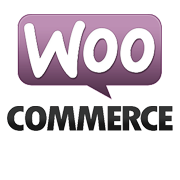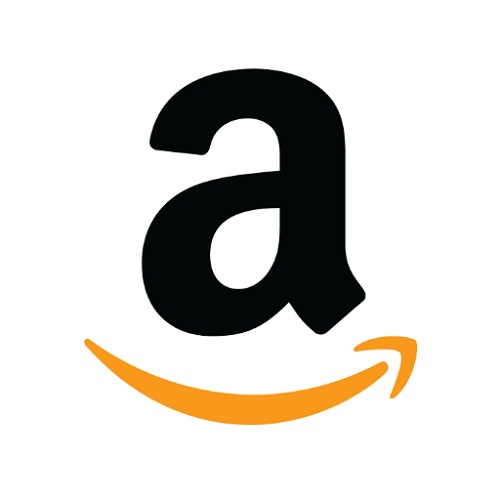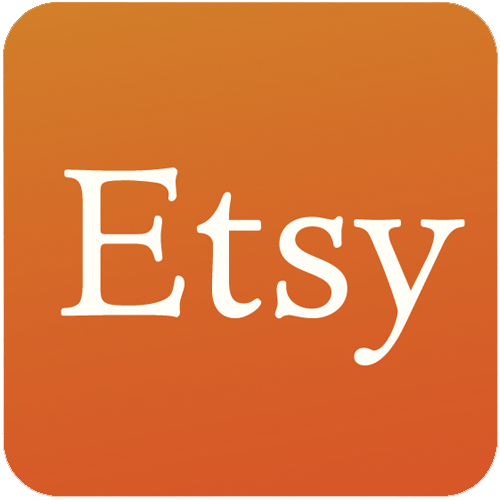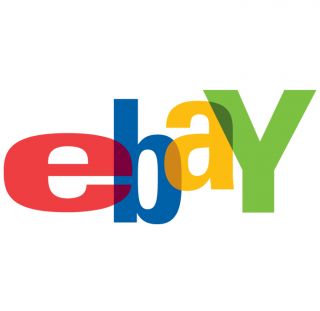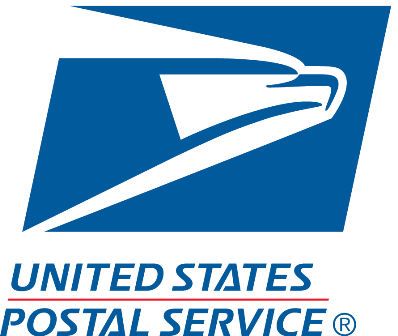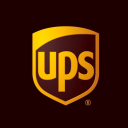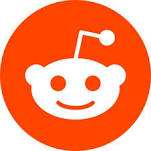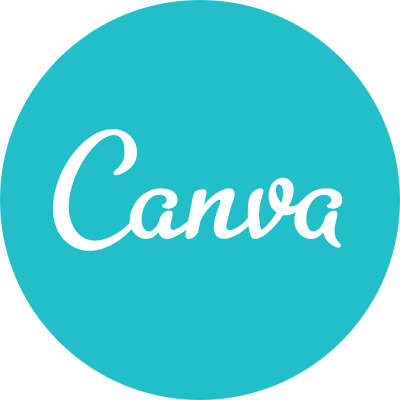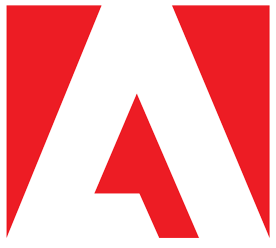Starting A Business Selling Portraits Made of Pennies
Hello! Who are you and what business did you start?
My name is Maury McCoy, I’m the creator of the Penny Portrait Kit. This kit allows anyone to create a crazy cool portrait of Abe Lincoln out of pennies. It’s a fun experience and the final work of art is stunning conversation starter you can hang on your wall. You can be guaranteed it will be worth at least $8.46. (It takes 846 pennies...)
So far we’ve sold over 6,800 kits and have them on display at the U.S. Mint, Lincoln’s Presidential Library, the Money Museum, etc. It’s more than just an 18 x 24 poster, it’s also a fun learning experience.
We include a booklet with info about coin collecting, Lincoln history, chemistry experiments you can do with pennies and even include a collectible 1943 steel penny with each kit.

What's your backstory and how did you come up with the idea?
I was surfing the internet and was inspired by a story about a father and son who created a giant portrait of Abraham Lincoln out of $25 worth of dark/light pennies. I thought it was a fantastic concept and thought maybe other people would like to do the same thing. The idea of making Lincoln out of little Lincoln’s thoroughly amused me.
I have a background as a graphic designer/animator so I was able to create a proof of concept in Photoshop rather quickly. I added a few additional shades (4 total) which provided detail to the image while also allowing me to shrink it to a more manageable size without losing the illusion. After several iterations, (actually, many, many iterations...) I came up with a version that I was happy with but only used 846 cents.

I found a local printer to create a prototype as a template. I glued some pennies on and was really impressed by how well it turned out! A photo doesn’t do it justice as actual pennies are not just light and dark, but reflective and dull. It looks amazing in person. After seeing the expression of the few folks I showed it to, I knew I was onto something.
I’ve always been curious about how e-commerce works as my previous jobs have been in the service industry. I’ve worked as an artist, video game producer and in investment marketing. This was my first foray into an actual physical product with inventory, shipping, payment processing, etc. so there was a lot to learn! I own another business in which I help investment managers raise money for their investment strategies, so would primarily dabble with this project in the evenings and on weekends. I didn’t have high expectations and primarily saw this as a learning experience that “might” work out. My initial, very modest, goal was to sell enough to recover my initial investment. That actually happened pretty quickly and 10 years later we’ve now sold over 6,000 of them.
Take us through the process of designing, prototyping, and manufacturing your first product.
Creating the original prototype was a lot of fun. I toyed with placing pennies in a grid pattern vs. a honeycomb pattern, tried 3 vs. 4 shades of pennies and also tried different poster dimensions. A local printer was able to print a sample one for me that cost ~ $30.
Once I nailed down the design, I filed for a copyright which costs only $35 for a single work of art. The toughest decision I then had was how many posters to purchase initially.
I wanted a high-quality product, so didn’t want to skimp on printing or materials, but printing can be quite expensive. There are online places which will print posters for you at great prices, but the paper quality is lower and when you include shipping, the savings disappear.


I ended up going with a respected local printer to avoid shipping costs and to oversee the quality of the product. The trick with printing a poster this size is the initial setup fee is about $1,000 whether you print one poster or one thousand. My fun little “learn about e-commerce” project suddenly got expensive! Of course, the more you order, the cheaper it is, but it was nearly impossible to guess what the demand for a product like this would be. (This was before Kickstarter came about, which would have been ideal for something like this.) I decided to start with 1,000 posters and see how it went.
Another tough decision involved packaging. I really liked the way my product looked in a clear tube, but the cheapest supplier of clear tubes charged $1.40 per tube and had a minimum order of 500 units. Cardboard tubes cost about half that, and I could order just a few at a time.

I ended up ordering 500 clear tubes, but used those strictly for orders that would end up on retail shelves. For online orders, I ship in the more durable white cardboard tubes. It was a tough decision at the time because $700 is a pretty big upfront expense for shipping tubes! (Not to mention I had a garage full of them.)

This is one situation where my design sense vetoed my business sense. The final packaging actually cost more than the product inside of it which was something I wasn’t expecting.
Describe the process of launching the business.
Penny Portrait is a sole proprietorship. I filed a simple DBA form (Doing Business As) with the state for ~$25 and I was off and running.
I could then open up a bank account which I used to keep all the business expenses separate. I fortunately had savings from the “real” job which I used to pay the upfront expenses of getting the business rolling. All told, it probably cost me about $2,000 to get things off the ground, most of which was spent on inventory.
Kickstarter would have been perfect to gauge interest, but didn’t exist at the time. I did however feel it would be a great way to get exposure, so I launched a Kickstarter campaign when it came time to fund my second print run. (Including an obligatory goofy Kickstarter video.) I pre-sold enough units to cover a print run of 2000 posters and got a lot of free publicity in the process.
I have a bit of experience as a graphic designer so was able to create a rudimentary website. Figuring out payment processors, taxes and shipping was a bit trickier. At the time I started this biz in 2008, a lot of the tools for these things were pretty rough. Shopify didn’t exist at that time and WordPress was very clunky. I hand coded all the HTML and added a big “Buy Now” button from PayPal and voila, I had an online business!
Since that time, I upgraded my website to WordPress in order to create a site that was mobile friendly. I’ve had to deal with a number of technical issues like hosting and SSL certificates that folks using a site like Shopify just don’t need to deal with. That said, I also don’t get stuck with the recurring fees a service like Shopify entails either.

Since launch, what has worked to attract and retain customers?
I’ve worked to get exposure on various blogs and by posting on coin collecting forums, homeschooling groups, art sites, etc. A popular financial blog called My Money Blog really got me a lot of exposure initially by spotlighting my startup.
The trickiest thing about marketing a unique product like this is people don’t necessarily search for something they don’t know exists.
I’ve tried running ads via Google, Facebook, Amazon, Reddit, Pinterest, print ads, you name it. The problem with spending money on advertising is the lifetime value of a customer for me is about $20. Once they’ve made a Penny Portrait for their wall, there really isn’t a reason to buy another unless it’s a gift.
In the early years, my success was very closely tied to how much time I put in marketing online. If I put the effort in and was active on online message boards and forums, I’d make more sales. It almost felt like being a door-to-door salesperson! I had a few big wins early on such as when my wife helped get us into a number of historical museum gift shops, but early on my packaging wasn’t quite as compelling as it is now and it wasn’t really obvious just what exactly a Penny Portrait was. They sold okay, but not at the level they probably should have.
There was one year where the “real job” got busy and I didn’t put much time into promoting my product and sales were down significantly. It was a bit of a make or break moment as I felt there was a lot of potential for this product but wasn’t sure how to unlock it.
Getting into catalogs
I had a friend who had created a cool board game called Spontuneous and he invited me to join him at an event called Toy Fair in NYC. I tagged along and used the opportunity to make a lot of industry connections and get a feel for how to better distribute my product.
At this event, I was able to reach out and be included in a number of print/online gift catalogs, including Uncommon Goods, The What on Earth Catalog, Things You Never Knew Existed, etc. These really did wonders for my exposure, but as is the nature of these catalogs, they typically only showcase a product for a year or two as they are always trying to present new and unique gifts. That said, I really feel these catalogs helped me cross a critical threshold. In fact, one of my favorite vendors Vat19.com reached out to me after seeing my product in a competitor’s catalog. Vat19.com went on to create a hysterical commercial for my product (complete with shirtless men) and even created a 9 foot tall Penny Portrait as a publicity stunt.
Amazon
The biggest source of sales for me these days is Amazon. I started off doing “Fulfilled by Seller” where I would ship orders off to customers as they came in, but found switching to FBA “Fulfilled by Amazon” where I ship inventory to Amazon warehouses made my life a whole lot easier and increased sales significantly. In fact, switching to FBA immediately more than doubled the number of units I was selling.

The ability to order my product via Amazon Prime really helps and it’s nice to just get emails stating I’ve made a sale and not have to do anything. (That said, Amazon makes more off each Penny Portrait sale than I do. It’s nice I have a huge margin built into this product as Amazon takes a big bite.)
My goal was to have this business not take up too much of my time and it’s now at the point where I ship off cartons of Penny Portraits to various vendors and occasionally fill the individual orders that come directly to me through my website. It does gets a little busy around the holidays. (I typically sell about 500 units through Amazon alone in December.) For the most part though, things are on autopilot except for advertising which is more of a manual effort of reaching out to bloggers, posting on social media, etc. It’s nice because that is part of the business I can do on my own schedule.
How are you doing today and what does the future look like?
I pull in about $15K a year from this business and maybe $5K of that goes to expenses leaving about $10K of profit.
Really the best way for me to increase my margins is to order in bulk, but there are only so many beds to hide posters under and if I order more than 1200 tubes at a time I lose a big portion of my garage! The product and packaging, not including labor for assembly, runs about $3, so my margins are also heavily dependent on the sales channel. If I sell from my website directly, I make about 50% more than I make through FBA. Amazon takes a huge chunk, (about $11) and that’s before considering that I also pay for shipping to them and buy advertising from them as well. That said, I’d guess 60% of my biz is through Amazon these days.
The product retails for $20-$22 and I sell them to wholesalers like catalogs and coin shops for $10/unit. The more channels I can get in the better and think there is an opportunity to reach out to more museums and tourist destinations. I’d love to learn more about SEO and social media, but so far all my experiments with paid advertising haven’t really worked out too well. One thing I’ve explored is adding a Blog with unique content that might drive people to my site.
Other than advertising on Amazon, it’s been very difficult to measure the ROI of my advertising spend. (I honestly think a lot of the people I’m trying to drive to my site end up buying on Amazon anyway.) I’ve considered looking into an expert to help me out with social media/advertising, but they typically charge so much that I’m not sure it would be cost effective.
Through starting the business, have you learned anything particularly helpful or advantageous?
Selling a product I personally created and own the copyright to has been useful as I haven’t had to worry about competitors. I also don’t need to pay anyone else for their intellectual property so it means more profit for me. Really, my biggest competitors are the vendors I sell wholesale to, as they tend to be better at social media and SEO than I am! I actually appreciate the fact that they do so much to get the word out, so don’t mind sharing the profits with them. The more chances people have to see my product the better. It’s also nice because when Amazon or I run out of inventory, there are still places online to always get my product.
For a while, I did have problems with people offering counterfeits on Amazon. They would list Penny Portrait Kits for half price but had no intention of delivering them. These random storefronts would pop up advertising ridiculously low prices for Penny Portrait Kits which I knew was impossible as they had never purchased inventory from me. I even ordered one to see what would happen and sure enough never received it. Not sure what their business model was but fortunately, since I could prove to Amazon I had a copyright for my product, Amazon would shut down their storefront a few days after I informed them. It was very much a game of whack-a-mole though as often there were up to 3 identical storefronts with different names selling Penny Portrait Kits at one time. This went on for about a year until the counterfeiters finally gave up.
The two biggest turning points for my business were when I went to Toy Fair and found a number of gift catalogs willing to carry my product and when I switched to FBA. FBA turned my business into more of a “set it and forget it” type business which works out very well for me.
Having a graphic design background has also helped immensely as so much of advertising and promotion is visual for a product like this. I’ve saved a lot of money being able to do packaging and website creation myself.
What platform/tools do you use for your business?
I hate getting stuck with monthly fees, so if I have the option to pay for something once, I’ll typically go that route.
I currently use a Wordpress site I created with DIVI and a WooCommerce back end. Paypal is useful when I need to create USPS shipping labels I can print from home.
I’ve used MailChimp to send out exactly one promotion as I don’t like to spam my customers. MailChimp is free if you have less than 2000 subscribers so that works well.

I have a fun blog where I post goofy things related to my biz.
I download all my transactions from my bank account into Excel and use that and TurboTax to do taxes.
I used Fiverrr to have someone create an animation of a Penny Portrait being assembled which turned out pretty well. (It actually cost me $5.)
What have been the most influential books, podcasts, or other resources?
The very best podcasts and blogs are the ones who have interviewed me. ; )
The long-term exposure from having content on the internet forever has been fantastic and really helps with my search results. I’ll give a shout out to MyMoneyBlog, Chris Guillebeau’s “Side Hustle School” (Chris is the best selling author of such notable books as “The $100 Startup”), Ryan Helm’s “Grit and Hustle” podcast and Nick Loper over at “Side Hustle Nation”.
As far as books, there is one very short book I recommend to every entrepreneur called the “Max Strategy” by Dale Dauten. It’s a quick read, but extremely thought provoking.
Advice for other entrepreneurs who want to get started or are just starting out?
Control expenses. Spend a little money and measure the results before going big on anything. There are tons of middlemen in any industry and if you don’t watch yourself, all of your profits will go to these folks instead of yourself.
You don’t need fancy stationary or expensive accounting software. Keep things lean and if you have something that works, you’ll know when to scale up. You don’t need an LLC to start off and you certainly don’t need the expenses that come with it.
Also, don’t focus on the bad things that could happen. (Some of them inevitably will.) Too often people focus on the negative when what they don’t realize is that just as many unforeseen good things will happen when starting a business.
When starting Penny Portrait, I mentioned to a friend I was going to include a 1943 steel penny with each kit as I had about 50 of them and figured it would be a neat incentive for early buyers. Ends up my friend had gone through an “Ebay phase” and had acquired over 5,000 steel pennies that were just sitting in storage.
He sold them to me for a modest profit and I now include a steel penny with each kit sold. Sometimes things just work out that you can’t foresee.
Are you looking to hire for certain positions right now?
If anyone has clever ideas on how to drive sales from my website, I’m all ears, (just like Abe!) The compensation model would need to be based on earning a percentage of the results as too many of my advertising efforts have just been throwing money into the wind without seeing any return on those investments.
I know there is a lot of room for me to improve in this area, but the learning curve tends to be tricky as the tools are constantly changing.
Where can we go to learn more?
- PennyPortrait.com
- The Penny Portrait Blog
- Always happy to respond to email at info@PennyPortrait.com

Download the report and join our email newsletter packed with business ideas and money-making opportunities, backed by real-life case studies.

Download the report and join our email newsletter packed with business ideas and money-making opportunities, backed by real-life case studies.

Download the report and join our email newsletter packed with business ideas and money-making opportunities, backed by real-life case studies.

Download the report and join our email newsletter packed with business ideas and money-making opportunities, backed by real-life case studies.

Download the report and join our email newsletter packed with business ideas and money-making opportunities, backed by real-life case studies.

Download the report and join our email newsletter packed with business ideas and money-making opportunities, backed by real-life case studies.

Download the report and join our email newsletter packed with business ideas and money-making opportunities, backed by real-life case studies.

Download the report and join our email newsletter packed with business ideas and money-making opportunities, backed by real-life case studies.
